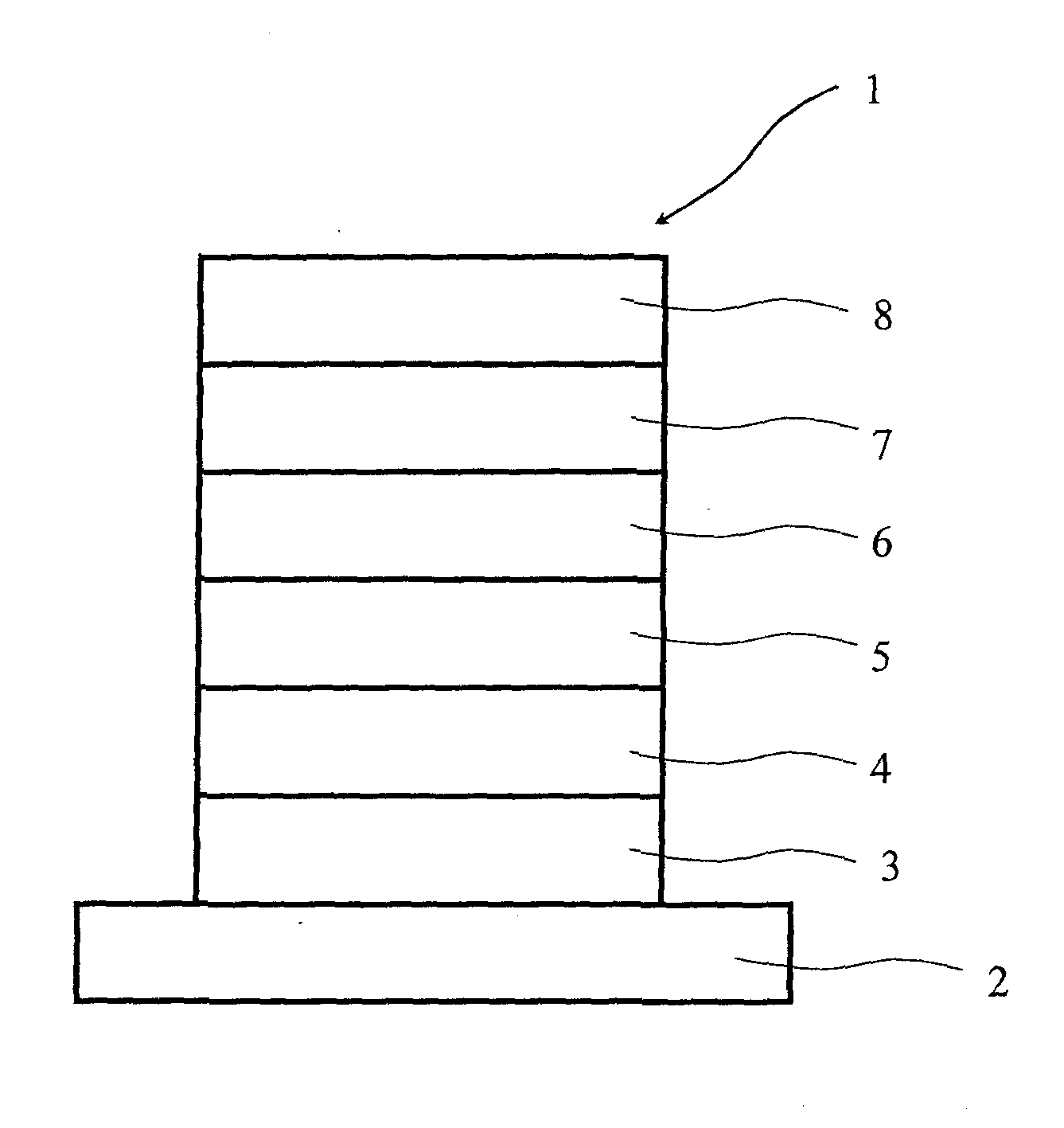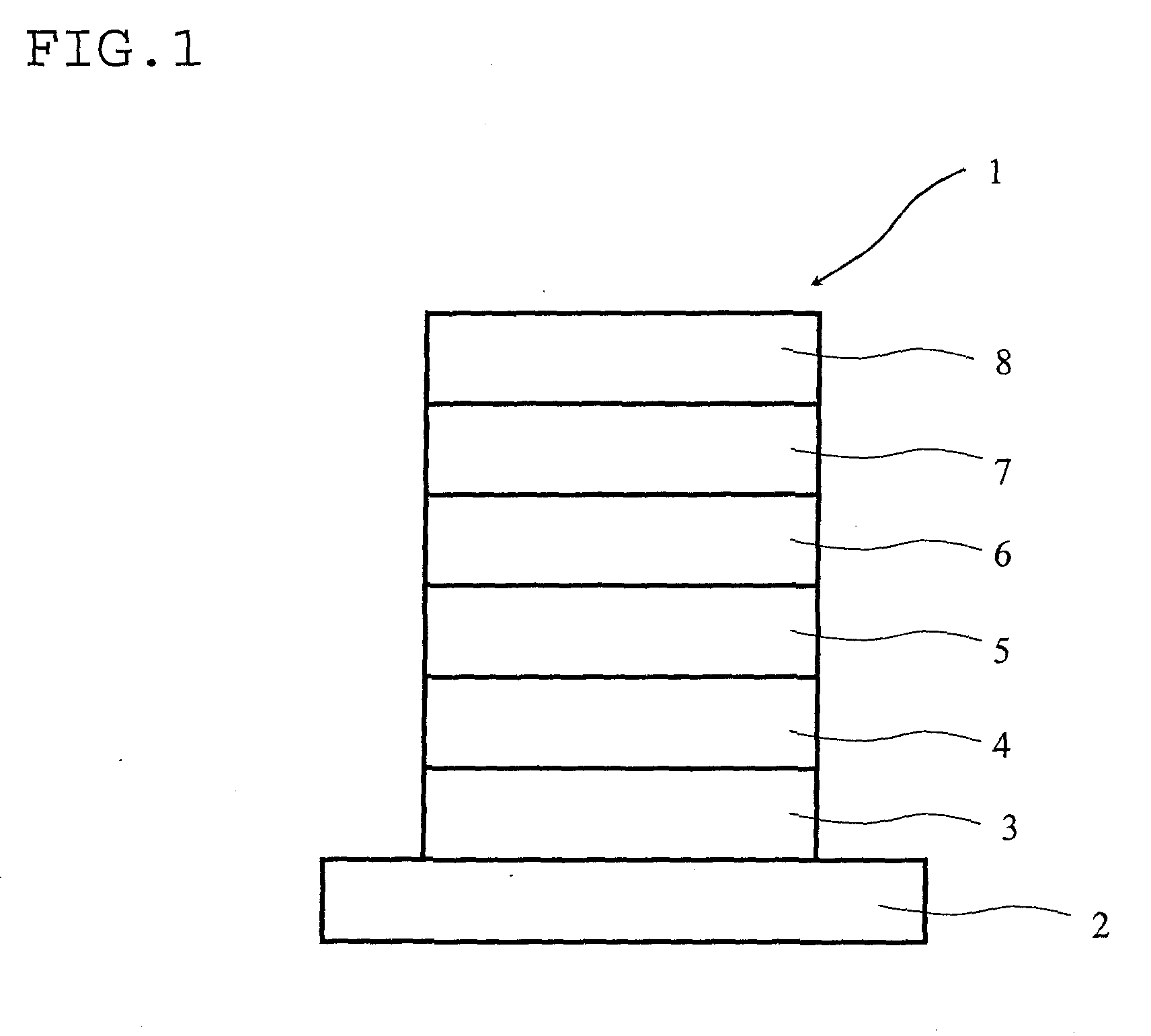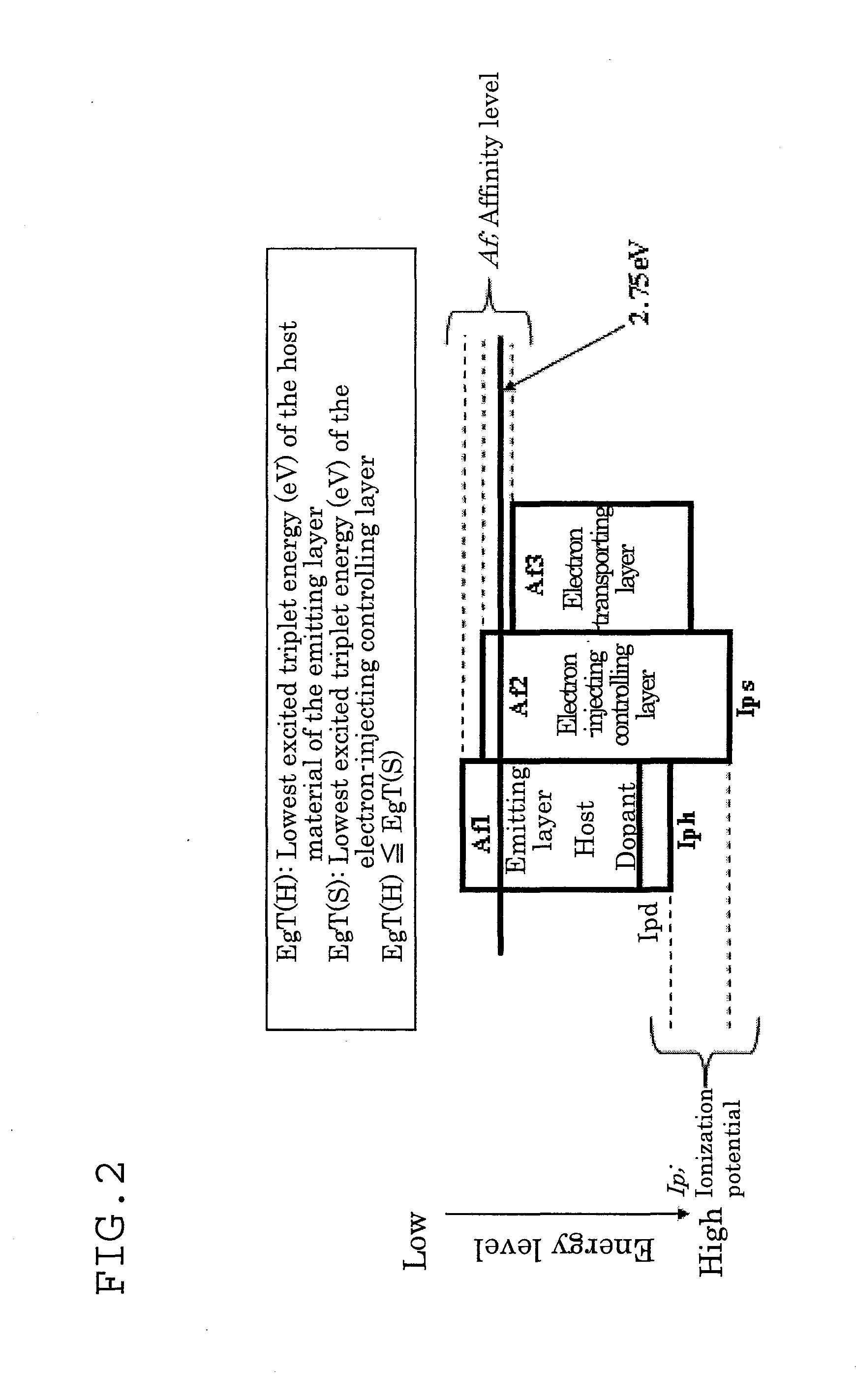Organic electroluminescent device
- Summary
- Abstract
- Description
- Claims
- Application Information
AI Technical Summary
Benefits of technology
Problems solved by technology
Method used
Image
Examples
example 1
[0342]A glass substrate (made by Geomatic Co.) measuring 25 mm by 75 mm by 0.7 mm-thickness with an ITO transparent electrode was subjected to ultrasonic wave cleaning in isopropyl alcohol for five minutes and then to UV ozone cleaning for thirty minutes. This glass substrate with the transparent electrode line was set on a vapor deposition apparatus, and following compound (HT1) was deposited in a thickness of 50 nm on the surface of a side on which the transparent electrode line was formed so as to cover the transparent electrode. The HT1 layer functions as a hole injecting / transporting layer. As a host of the emitting layer, following compound (H2) was formed in a thickness of 40 nm by a resistance heating deposition. At the same time, as a phosphorescent dopant, the following compound (D1) was deposited with a mass ratio to the compound (H2) of 10%. This layer functions as an emitting layer. Next, the following compound (H3) forming an electron-injecting controlling layer was fo...
example 2
[0344]An organic EL device was prepared in the same manner as Example 1 expect for using the following compound (H4) as the electron-injecting controlling layer.
example 3
[0345]An organic EL device was prepared in the same manner as Example 1 expect for using the following compound (H5) as the electron-injecting controlling layer.
PUM
 Login to View More
Login to View More Abstract
Description
Claims
Application Information
 Login to View More
Login to View More - R&D
- Intellectual Property
- Life Sciences
- Materials
- Tech Scout
- Unparalleled Data Quality
- Higher Quality Content
- 60% Fewer Hallucinations
Browse by: Latest US Patents, China's latest patents, Technical Efficacy Thesaurus, Application Domain, Technology Topic, Popular Technical Reports.
© 2025 PatSnap. All rights reserved.Legal|Privacy policy|Modern Slavery Act Transparency Statement|Sitemap|About US| Contact US: help@patsnap.com



